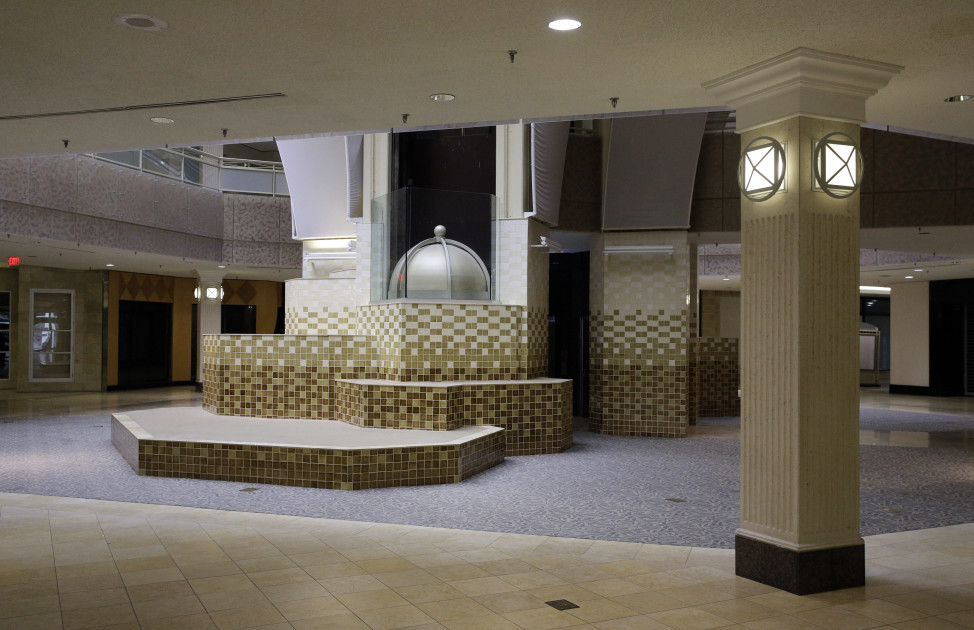
Inside the largely empty White Flint Mall in Bethesda, Maryland, Dec. 1, 2014. Mall owners plan to redevelop the space into an open-air town center. (AP Photo)
There was a time in the United States when the enclosed shopping mall was the place to go. These commercial centers were community gathering places for people of all ages — a de facto Main Street and town center that the suburbs never had.
But now many of these vast shopping arenas are dead or dying, leaving behind sprawling abandoned properties.
There are approximately 1,200 enclosed malls in the United States and about one-third of them are dead or dying, according to Ellen Dunham-Jones, a professor at Georgia Tech. She says competition from other malls and a diminishing middle class have contributed to the demise of certain malls.
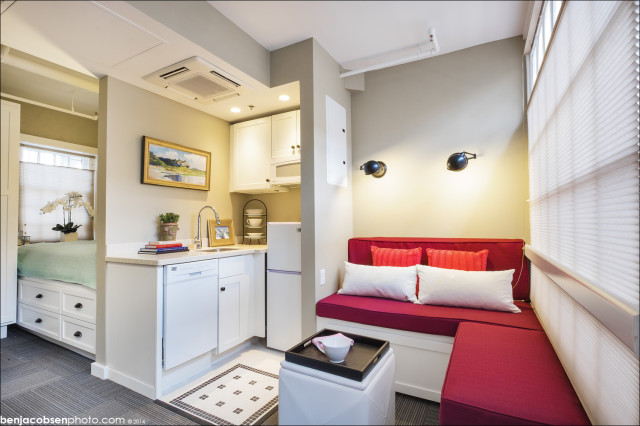
Arcade Providence, America’s oldest indoor mall, located in Rhode Island, was transformed into micro apartments on the top floor and shops on the bottom floor. (Photo by Ben Jacobsen courtesy Northeast Collaborative Architects)
And while malls are thriving worldwide, especially in countries with extreme climates or cultures that haven’t grown up with malls, in the United States, it’s an issue of fatigue.
“A lot of us have gotten bored of the format. What we’re craving is a little bit of time outdoors,” Dunham-Jones said. “That has become enormously popular so a lot of malls have demalled. They’ve removed their roofs over the common areas or we’ve seen a real resurgence in the construction of more traditional, old open-air Main Streets.”
Instead of a super-block with one building surrounded by a sea of parking, these retrofitted spaces are being carved up into public streets with retail on the ground floor and apartments and offices up above.
Dunham-Jones maintains the world’s only database of suburban spaces that are being re-imagined into more sustainable spaces. She can cite more than 220 examples of dead malls that are currently being repurposed; about 50 of those have become the bustling city centers their suburbs had been longing for.
These new spaces offer an urban lifestyle to the many people living in the suburbs whose lives don’t revolve around children and the local schools.
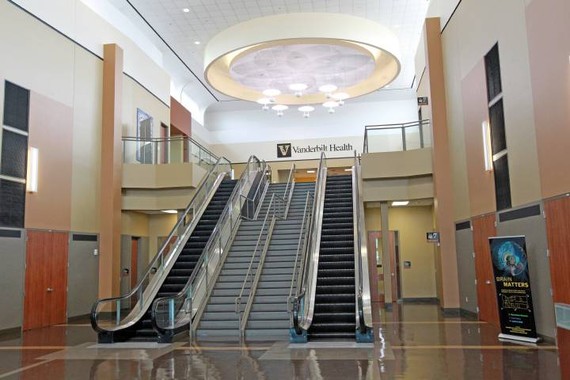
The Vanderbilt University Medical Center is located in what was once the One Hundred Oaks Mall (Photo courtesy Vanderbilt University)
However, not all ailing malls get a new lease on life as a bustling little downtown.
“There are going to be very different solutions,” said Dunham-Jones. “If there’s no market right now, it might make more sense to simply re-inhabit the existing building but with that more community-serving use, like a school or a library or a gym and maybe, eventually, the market can accommodate urbanization. There is not the market to redevelop every single dead mall.”
And while the death of a mall might be sad for the surrounding community, Dunham-Jones views it as an opportunity.
“When I see a dead mall, I see it as a tremendous opportunity to now we get a chance for a do-over,” she said. “We get a chance to rebuild it in a much more sustainable manner.”
That means retrofitting these abandoned behemoths to meet community needs. Dead malls have been reborn as job centers, mega-churches, community colleges, schools, medical buildings and even apartments.
Each of these revamped spaces meets the unique needs of the surrounding community but they all have the same result in that they allow many Americans to still live at the mall.
Spaces That Used to be Malls
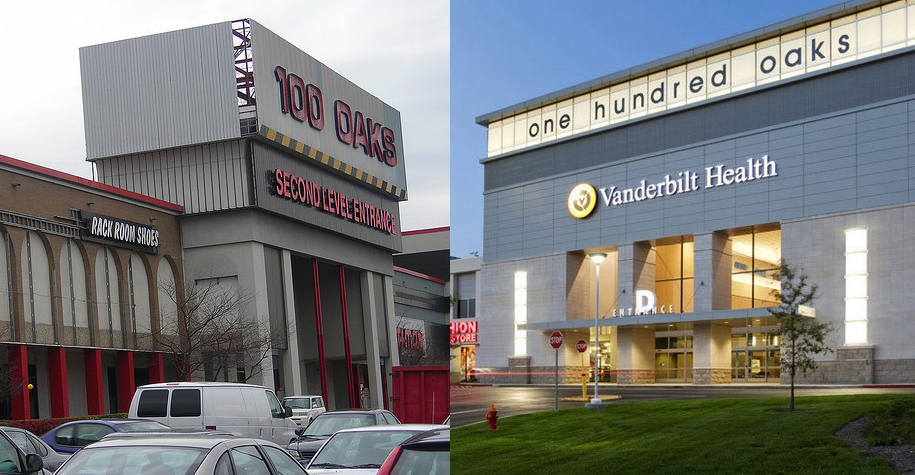
One Hundred Oaks Mall in Nashville, Tennessee, is now part of the Vanderbilt University Medical Center. (Photo on left by John Lamb via Flickr. Photo on right courtesy of Vanderbilt University Medical Center)
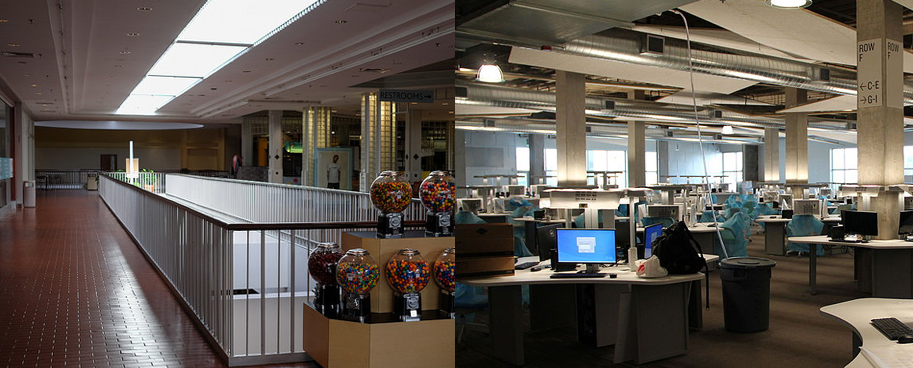
Highland Mall in Austin, Texas was retrofitted to become an academic facility for Austin Community College. (Photo on left by Lars Plougmann via Flickr. Photo on right by Accshelley via Wikimedia Commons)
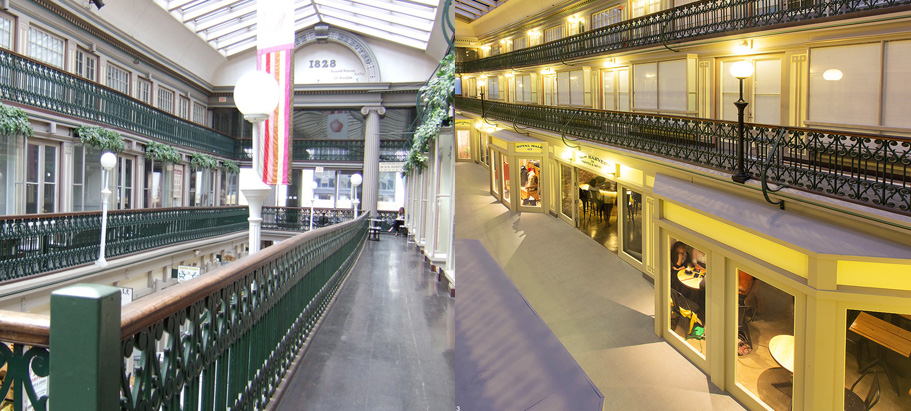
Arcade Providence, America’s oldest indoor mall, located in Rhode Island, was transformed into micro apartments on the top floor and shops on the bottom floor. (Photo on left by May via Flickr; photo on right by Ben Jacobsen courtesy Northeast Collaborative Architects)
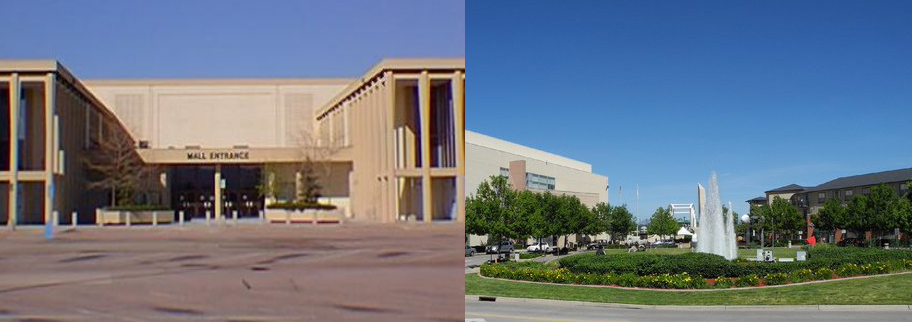
Cinderella City was the largest mall west of the Mississippi when it opened in 1968 in Englewood, Colorado. The retrofitted space is now a walkable urban center called Englewood City, featuring residences, a civic center and retail space. (Photo on left by Amber Case via Flickr, photo on right courtesy of the City of Englewood)






















Hi,I am so happy to write to you.
It is my dream to live in USA because I want to be more educate so I choose America as my dream’s country and a place where I want to live and study is because of its advancement and power,so please help me achieve my dream so that I may change my locality with. thanks for considering my request